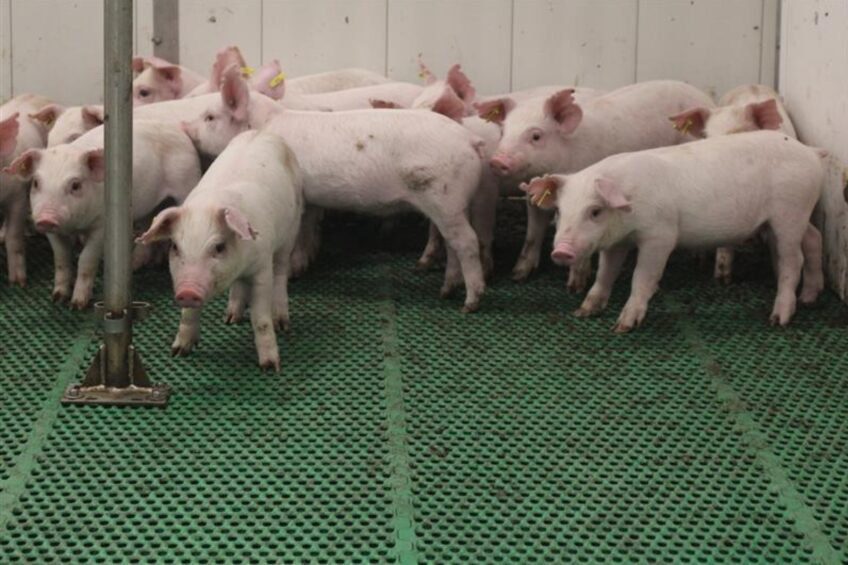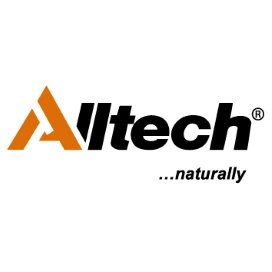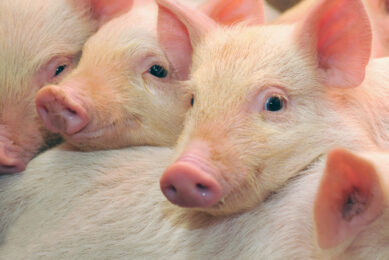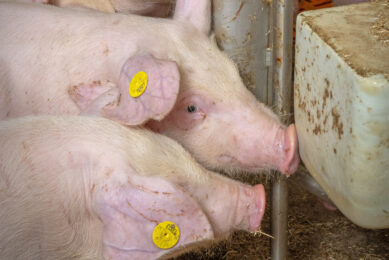5 key facts about trace minerals in pigs

Trace minerals play a crucial yet often overlooked role in pig health, influencing everything from gut microbiota to reproductive performance. Here are 5 key insights that could reshape how mineral nutrition is approached in swine production.
 Iron isn’t discussed enough
Iron isn’t discussed enough
It is assumed that a single shot iron should suffice for piglets in their first week. Studies show organic iron sources have 125%-185% higher bioavailability than ferrous sulfate. Thus, more iron is absorbed and less remains in the intestine lumen (and later in the pit), reducing metal excretion and environmental contamination. Why does this matter? Both iron level and source influence gut health. Excess non-absorbed iron disrupts microbiota, favouring harmful bacteria like E. coli — which thrives on iron — while reducing beneficial ones like Lactobacillus and Bifidobacteria, increasing nursery diarrhoea risk. Salmonella Typhimurium also uses iron to fuel intestinal inflammation.
Feed ingredients also contribute to iron intake but are often overlooked. For example, soybean meal — a major global feed ingredient — contains 128–200 ppm of iron with ~38% bioavailability. A 30% soybean meal diet targeting 100 ppm of iron can be at least 15% higher if soybean meal’s contribution is ignored. Other ingredients, like zinc oxide (ZnO) and mono- or dicalcium phosphate, also add iron but rarely appear in diet specs.
The NRC (2012) recommends 100 ppm for nursery pigs and 80 ppm for sows. However:
- A recent US survey shows pig diets contain 1.1–1.4x NRC’s (2012) recommendations;
- Most NRC (2012) references are over 50 years old;
- Breeding herd requirements remain unclear;
- Iron needs for 11-15 lb (5-7 kg) pigs were based on 0.6 and 14 lb/day (0.3 and 6.4 kg/day).
Iron source and level matter—more research is urgently needed.
 Wrong decisions can lead to issues with reproduction, health and digestibility
Wrong decisions can lead to issues with reproduction, health and digestibility
When mixed in a vitamin-trace mineral premix with inorganic mineral sources, up to 10% of vitamins A, K, and pyridoxine are lost each month. Unlike a severe deficiency, these losses are subtle and do not cause immediate, visible disease. Instead, they gradually impair sow reproductive performance, hinder blood clotting (which can be critical in cases of ileitis or dysentery), and reduce amino acid digestibility.
Organic mineral sources, however, help slow the degradation of vitamins in premixes. In many cases, vitamin stability can be better preserved than a vitamin premix without added minerals. This protective effect enhances nutrient retention, potentially improving pig herds’ overall performance and health outcomes.

 The use of organic trace minerals has clearly increased
The use of organic trace minerals has clearly increased
The use of organic trace minerals has increased over the past decade (Figure 1). Comparing industry surveys by teams led by Dr Josh Flohr of Kansas State University (2016, in blue) and Dr Jamil Faccin, at the time also KSU (2023, in pink), the percentage of producers using organic sources in growing and breeding pig diets increased, except for selenium, which was already high. Copper, manganese and zinc usage showed an average 11% rise. Although both surveys were done in the United States, it is not possible to know whether the same producers participated in both; the more recent survey had approximately double the number of participants. Nevertheless, the reasons for this increased adoption seem to include:
- greater bio-availability;
- more standardised manufacturing processes;
- improved vitamin and phytase stability;
- reduced manure excretion;
- health benefits.
As the industry advances, ongoing research and innovation may further expand the use of organic trace minerals in pig nutrition.
 To learn more about mineral interactions, it’s time to think outside the Sus scrofa domesticus box
To learn more about mineral interactions, it’s time to think outside the Sus scrofa domesticus box
The most researched mineral interaction is between zinc and copper. Despite a recent US pig industry survey showing 50% of producers use pharmacological copper levels throughout the nursery phase, data on the combined effect of high levels of zinc and copper on growth and health remain conflicting. Studies show that 3,000 ppm of zinc from ZnO increases copper sequestration in kidneys and enterocytes, reducing its availability and potentially slowing growth.

Mineral interactions are far more complex than only zinc and copper. To illustrate this, observe Figure 2, drawn from a paper on human nutrition.
Minerals can also interact with vitamins and other nutrients. A study done with rats has shown that the requirement for pantothenic acid increases when copper is high. This effect is linked to decreased liver cytochrome oxidase activity, an enzyme crucial for mitochondrial ATP production. Though little is known about this in pigs, the study found that increasing dietary copper from 10 to 30 ppm reduced cytochrome oxidase activity when pantothenic acid was at 33 ppm, but not at 66 or 120 ppm.
Could a vitamin bind zinc, reducing its bio-availability and increasing its excretion? That is what a study in humans finds. Diets high in folate/folic acid increased the excretion of a complex containing higher zinc concentrations. The reason? Both nutrients share the same transporters. Research on folic acid requirements is limited, yet the US industry uses over 12 times the NRC (2012) recommendations in the first nursery diet. More studies are clearly needed.
 Hasn’t there been enough talk about zinc?
Hasn’t there been enough talk about zinc?
Using pharmacological levels of zinc is one of the most effective tools for improving nursery gain and gut health. However, it should not overshadow the importance of good management practices. Recent data found that pigs fed with and without pharmacological zinc from 12-25 lb (5.4-11.3 kg) performed similarly from 25-50 lb (11-23 kg) resulting in equivalent overall performance. Thus, it is needed to rethink its pharmacological use in scenarios where high zinc does not reduce mortality or antibiotic use.
Zinc oxide has a high acid-binding capacity (ABC-4) of 21,863 mEq/kg, requiring significant hydrochloric acid to lower gastric pH to 4. Lower values are preferable, yet zinc oxide’s ABC-4 is among the highest of common feed ingredients, putting extra strain on the pig’s digestive system. For comparison, organic zinc has an ABC-4 of 600 mEq/kg, while a complete nursery diet for 25-50 lb (11-23 kg) pigs ranges from 350-450 mEq/kg.
Finally, pharmacological zinc reduces phytase activity, potentially hindering growth and phosphorus deposition into bones. In high-zinc diets, phytase super-dosing may help counteract this effect.











